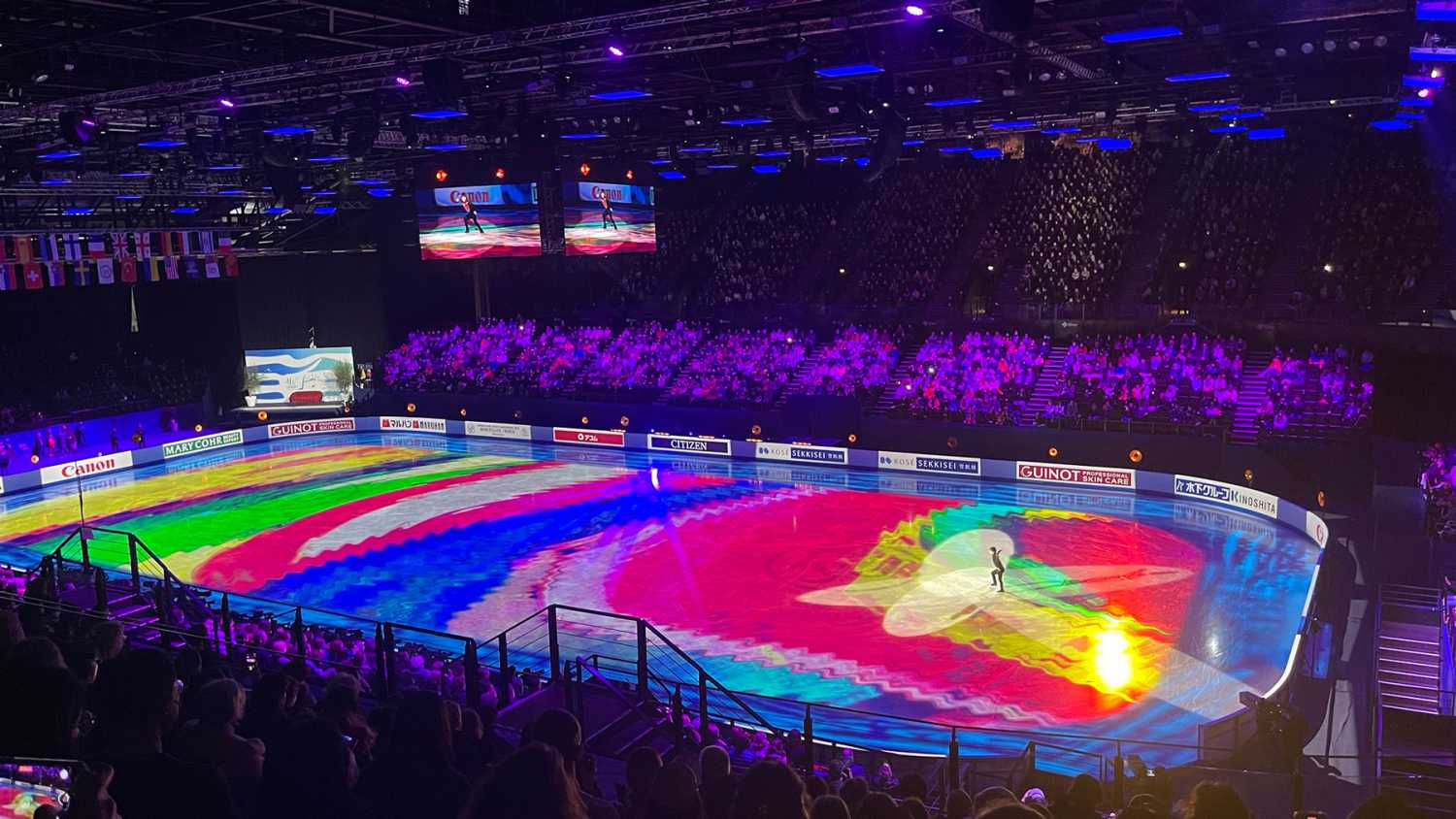Optocore controls World Skating Championships
- Details

The event itself was organised by the French Federation of Ice Sports, and the integrators were contracted by Charles Gueydan, their technical production manager.
Under the direction of proprietor Gilles Bouvard, GB4D has a rich pedigree in that sector, having previously worked on the European Championships in Lyon in 2006, and later the 2012 World Championships in Nice. On top of that, for nearly two decades they have been involved with the televised Les Étoiles de la Glace, the French Federation’s skating gala.
This year, GB4D was entrusted with providing the entire audio-visual network, as well as intercom, sound system, sports and production lighting (including bridges), stage structure and Video for the four-sided LED screens. They worked alongside Patrice Burle from Concept-Group for the structure and lighting accessories, while lighting creation was the responsibility of DoP, Tony Weber and sound design by Titou Victor and François Iund.
GB4D turned to a combination of Optocore / BroaMan interfaces, along with DiGiCo digital mixers and L-Acoustics Kara /K2 PA as they have for many large-scale events previously.
The biggest challenges they faced were the restricted assembly time (seven semi-trailers of equipment needed to be installed and ready to operate in 12 hours), and the trim height, with more than 80 motors at 22m height, to provide full visual clearance.
Gilles Bouvard emphasised that there had been no room for improvisation, since once the assembly was completed, and all compliances met, access to the ice was forbidden.
The network was formatted and designed by François Iund. The entire video element was distributed by BroaMan interfaces, including Mux22 MADI and Mux22 IC444, along with Repeat48 and Route66 devices. This provided distribution of the signals from the OB broadcast, as well as all the timing element and the insert capture camera, with video management under the direction of Emilien Vaast.
The Optocore network, which allowed for 320 inputs and 384 outputs, was in redundant five-point star design. Optocore M12 and DD4MR-FX interfaces provided all MADI connectivity, with X6R-FX and TP 16-channel converters at the heart of the system. For the BroaMan element the network was configured as a non-redundant star.
The IP network was managed by redundant Gigacore Luminex PoE interfaces for, among other things, lighting and intercoms.
Sound sources included music for the skaters - broadcast by two MAC Mini players equipped with Q Lab software - as well as ads and other presentation background music or jingles processed by a Broady Solutions MT128 multitrack machine. This came out in MADI 128 I/O via Optocore M12s, allowing different streams to be routed on several simultaneous outputs. Other sources included video soundtracks, managed from the two video control rooms. Finally, there was the ‘official speaker’ mics for the ISU, plus UHF microphones for interviews and animations.
For mixing and managing audio streams, GB4D installed a DiGiCo SD12 for the main mix (including broadcast) and SD11 for the ‘Player’ control room. Flow management in the Optocore network for broadcast was managed from FOH via the SD12.
The entire network was managed from the FOH control room. The international signal was provided in Mondovision since it is a world championship, while France Television was the broadcaster for the domestic audience.
















